Quite a few items of interest have happened in space in past month. I think I’ll save the big news for last and start with two stories that deal with the International Space Station (ISS).
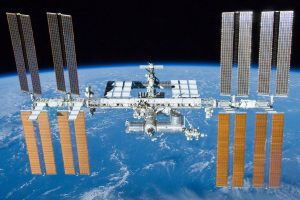
The Trump administration has released a draft memo of a policy decision to instruct NASA to end its funding of the ISS no later than the year 2025. The reason for the decision is that the White House wants NASA to concentrate to sending astronauts on deep space missions back to the Moon or on to Mars and with all of the budget woes in Washington NASA can’t afford to pay for the ISS as well.
The hope is that commercial corporations such as Space X or Boeing or Bigelow will step in and take over the US commitment to the ISS but there is considerable doubt that the commercial aerospace sector can be ready by 2025.
One participant in the current ISS consortium who might be willing to take over some of NASA’s commitment is Russia. The Russian Space Agency has recently announced plans to use the ISS as the basis for a space hotel / vacation resort.
The plan is to attach a 20 ton, 15 meter long luxury sleeping module to the existing ISS. The module will house four tourists and even provide then with a lounge area, exercise equipment along with hygiene and medical facilities, the guests will even get ‘free Wi-Fi’. The expected cost for the design, fabrication and launch of the module is around $300 million US dollars and the expected cost for a one to two week stay will be around $40 million per person. See image of possible design below.
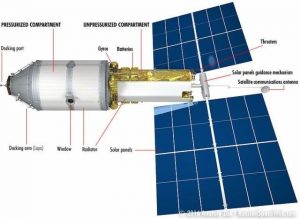
So it looks as if the ISS might be just another dead end on the road into space. The Apollo program got us to the Moon but when it ended there was nothing to be the next step. The space shuttle flew for twenty years before it had anyplace to go and once the ISS was completed the shuttle was canceled. And now the ISS will be abandoned without any replacement.
We need a long term strategy, a step by step plan for developing the infrastructure of space instead of ‘Let’s try this’, ‘O’k now let’s try this’, ‘Now let’s try something else.”
Earlier I mentioned a few of the commercial corporations that are hoping to play an expanding role in future space development well now there are two newcomers also trying to find a slice of the market. The first of these companies calls itself Rocket Lab, which has recently had a successful second test flight of its Electron launch vehicle. As a part of the test Rocket Lab succeeded in placing three small satellites into orbit.
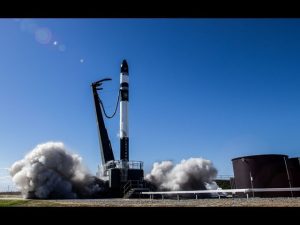
Now the Electron rocket is a small rocket. Its payload of 150-250Kg is much smaller than Space X’s Falcon 9 rocket but that’s Rocket Lab’s whole plan, to provide a low cost alternative for launching small satellites for companies and countries that can’t afford a bigger rocket.
Another new company trying to find a role to play is Effective Space, a UK company that is planning to develop a technique to extend the usable lifespan of the most expensive satellites that are already in orbit.
These satellites, communications, weather and space imaging to name a few, can only operate so long as their antennas and cameras are pointing in the right direction. Each of these satellites has small ‘station keeping’ engines that keep oriented the way they belong and those engines need fuel. In general the satellites carry enough fuel for a usable life of 15 years, once that is gone your multi-million dollar satellite is just space debris.
What Effective Space is planning is to develop a drone spacecraft that will rendezvous with and attach itself to a satellite that is about to run out of fuel. The drone will then use its station keeping engines to extend the life of the expensive satellite. The drones will be designed to provide another 15 years of useful life and as the drone itself begins to run out of fuel it will send the satellite into an orbit that will plunge it into Earth’s atmosphere so that it doesn’t interfere with the operation of other satellites. The image below shows how this will work.
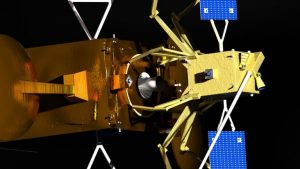
Effective Space has signed a contract with an unnamed satellite operator to launch it’s first two drones in 2020 so we’re going to have to wait a few years to see how well this scheme works.
Which brings us finally to the big news; the Space X Falcon Heavy has successfully completed its first test launch from Pad 39A at Cape Kennedy. The news is big because the Space X Falcon Heavy rocket is now the most powerful space launch system since the Saturn V rocket that sent the Apollo astronauts to the Moon. Capable of delivering 54 metric tons of payload into low Earth orbit the Falcon Heavy basically consists of three Falcon 9 first stage rockets strapped together, see image below.
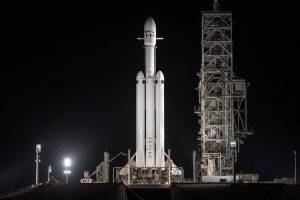
Like the Falcon 9 rocket, which has now been successfully recovered over twenty times, the trio of first stages of the Falcon Heavy are also designed to be recovered and reused. In this first test flight the two outer first stages were recovered at the land based landing pad but unfortunately the central first stage failed to make its recovery on Space X’s oceangoing recovery barge. This was the only setback in what was an otherwise flawless first test. The image below shows the Falcon Heavy taking off.
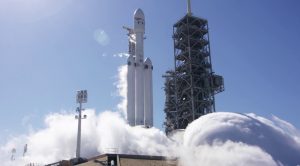
As a bit of frivolous fun, the payload of this first test launch was Space X CEO Elon Musk’s own red Tesla electric car, Musk is also CEO of Tesla motors. The car has now left Earth orbit on a trajectory that will take it as far out as the asteroid belt.
There will be plenty of opportunity for more useful payloads in the coming years. Large communications satellites, spy satellites and even manned flights. Musk has even suggested that a manned flight to orbit the Moon could be carried out this year although right before the Falcon Heavy test he indicated that the schedule for such a flight was being pushing back.
Nevertheless the success of Falcon Heavy’s first flight is certainly good news for Space X and by extension a significant mark of progress in man’s exploration of space.
